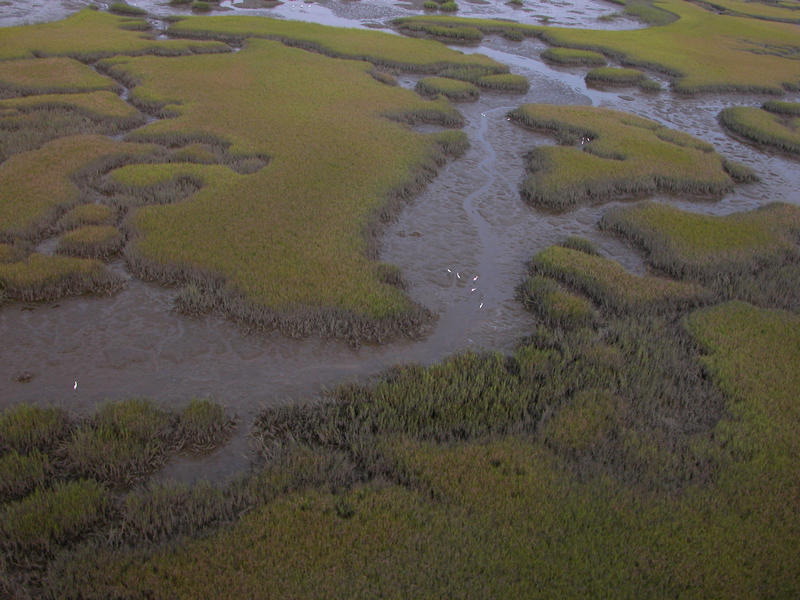Salt marshes are protected coastal wetlands that function as a transitional zone from the land to salty/brackish water. Salt marshes are commonly referred to as tidal marshes because they naturally occur in the intertidal (littoral) zone. This area fluctuates with the tides with marsh beds being exposed to the air at low tide and submerged at high tide.
Marshes are dominated by halophytic (salt tolerant) plants. The dominant emergent grass in the Southeastern U.S. is smooth cord grass (Spartina alterniflora). The zone directly above the intertidal zone is dominated by black needle rush (Juncus roemerianus). The higher/drier areas of the marsh contain much more biodiversity; one example of a plant commonly found in this zone is salt meadow cord grass (Spartina patens).
Coastal salt marshes are regarded as one of the most biologically productive ecosystems in the world. The marsh's energy is driven by the breakdown of marsh grasses into small plant particles called detritus. The detritus is broken down by bacteria, which then fuels the food web, beginning with phytoplankton (algae) and moving to zooplankton (microscopic animals), invertebrates and estuarine fishes. The food web of the salt marsh also extends outward to include larger open-water fishes, local and migratory birds, and marine mammals. Salt marshes also provide shelter and serve as an excellent nursery ground for a large variety of marine species. The grasses provide camouflage for juvenile fish and invertebrate species, and also help to protect against larger predators.
Beyond their biological importance, salt marshes help to protect our shorelines from erosion, provide a nursery and feeding ground for 70% of Florida's commercially valuable fisheries (fish, shellfish) and improve water quality by filtering excess nutrients and pollutants which enter our watershed from land-based runoff.
Salt marshes in northwest Florida were abundant in the past, but due to natural processes and adverse human influences they have consistently degraded. Salt marshes naturally establish in areas of low wave energy. Many areas of northwest Florida where marshes once existed would benefit from the implementation of a restoration project; however, these areas are often exposed to high wave energy as the result of the disappearance of historical oyster reefs.
In order to achieve maximum protection for a newly created salt marsh from wave energy, increase biodiversity, and create a living shoreline, several different restoration projects are combined with salt marsh restoration. These include the installation of oyster reef breakwaters and the the reintroduction of seagrass beds (SAV) into areas of historical abundance. These projects can be large in scale, such as Project GreenShores in Pensacola Bay, which consists of 15 acres of salt marsh habitat, or they may be on the order of less than an acre.
In an effort to promote the functionality of living shorelines to the public in northwest Florida, we are currently in the pilot phase of a project to restore several marsh areas on privately owned lands suffering from erosion, as well as continuing to restore marsh areas on publicly owned lands.


